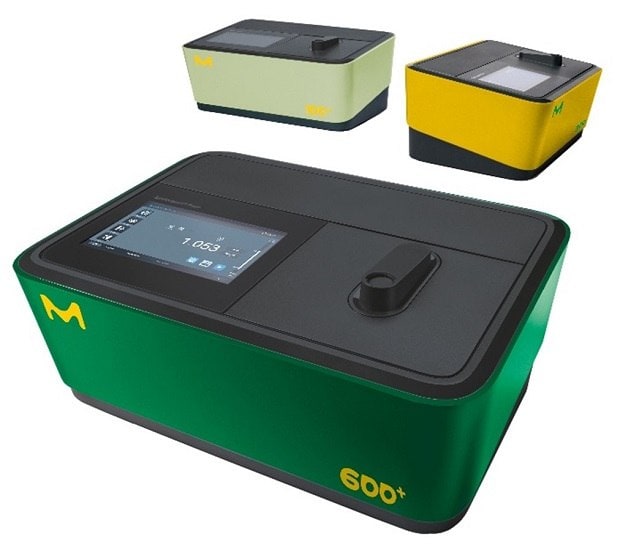Photometric Determination of Ammonium in Drinking and Surface Water Using the Indophenol Blue Method
Abstract
This protocol describes a procedure for measuring the concentration of ammonium in drinking and surface water using the indophenol blue method utilizing Spectroquant® test kits, which allow for precise monitoring of water quality. The reaction between ammonium, hypochlorite, and phenol produces a blue indophenol derivative which can be evaluated using Spectroquant® photometers.

Spectroquant® spectrophotometers - Prove 100 plus, Prove 300 plus, & Prove 600 plus
Introduction
Ammonium (NH4+) is the ionized form of ammonia (NH3). It is one of the major pollutants of drinking water and surface water1. While there is no direct negative impact of ammonium-excess on human health, when drinking water is polluted by it, or for that matter, on aquatic lives when it pollutes surface water, research has shown that ammonium can cause nitrification. Nitrogen dioxide (NO2) or nitrites, the resultants of nitrification pose serious hazardous risk on human health, and beyond a threshold level, the fate of aquatic lives of polluted surface water turns fatal2.
This application note details the photometric determination of ammonium in water samples, using the indophenol blue method. Post the sample extraction and in a strongly alkaline solution, ammonium nitrogen is present almost entirely as ammonia, which reacts with hypochlorite ions to form monochloramine. This in turn reacts with a phenol compound to form a blue indophenol derivative that is determined photometrically.
Reagents, Instruments and Materials
Ammonium Test Kits/Reagents
For the measurement, one of the following Spectroquant® test kits is necessary:
- Spectroquant® Ammonium Cell Test (1.14739)
- Spectroquant® Ammonium Cell Test (1.14558)
- Spectroquant® Ammonium Test (1.14752)
Instrument(s) & Devices
For the measurement, one of the following Spectroquant® photometers is necessary:
- Spectroquant® VIS Spectrophotometer Prove 100 Plus (1.73026)
- Spectroquant® UV/VIS Spectrophotometer Prove 300 Plus (1.73027)
- Spectroquant® UV/VIS Spectrophotometer Prove 600 Plus (1.73028)
- Spectroquant® Colorimeter Move 100 (1.73632)
Also, legacy systems
- Spectroquant® Spectrophotometer Prove 100/300/600
- Spectroquant® Photometer NOVA 30/60/60A
Software for Data transfer
- Optional Spectroquant® Prove Connect to LIMS software package (Y.11086) to transfer your data into an existing LIMS system.
Instrument Accessories
- Rectangular cells 10 mm (1.14946) and/or
- Rectangular cells 20 mm (1.14947) and/or
- Rectangular cells 50 mm (1.14944)
Other Reagents and Accessories
- Water for analysis (1.16754)
- Titriplex® III for analysis (1.08418)
- Sodium hydroxide pellets for analysis (1.06498)
Experimental Procedure
Reagent Preparation
Titriplex® III solution: Dissolve 12 g Titriplex® III and 2.6 g sodium hydroxide in 100 mL of water for analysis.
Sample Preparation
- Turbid samples must be filtered clear for determination.
- Where the water has previously been through a softening process the analysis may be hindered by the precipitation of alkaline - earth hydroxides. In such cases, after allowing a sufficient time for the color to develop, add dropwise Titriplex® III solution to dissolve the precipitation.
- Treat the blank reading with the same amount of Titriplex® III.
Analysis
Determine with one of the above-mentioned test kits.
Calculation
Ammonium content in mg/kg NH4+ = analysis value in mg/L NH4+
See more applications for photometry at Protocols and Application Notes
References
Zaloguj się lub utwórz konto, aby kontynuować.
Nie masz konta użytkownika?